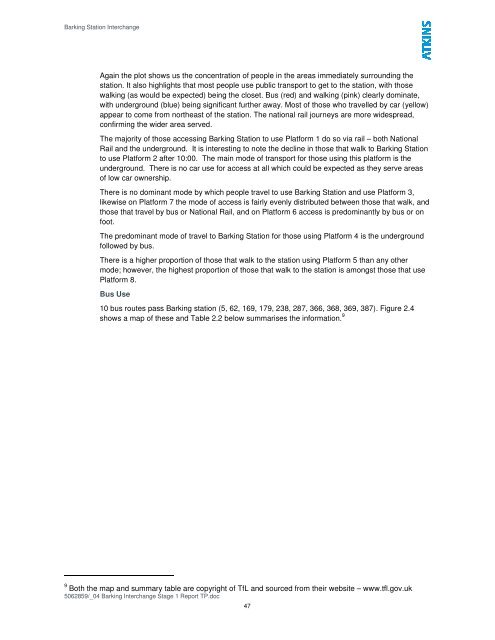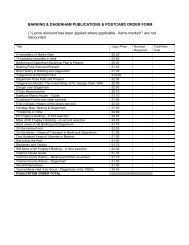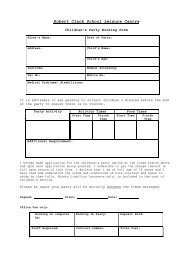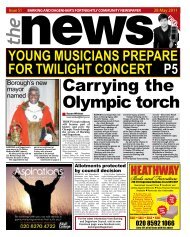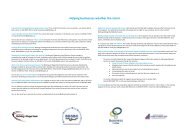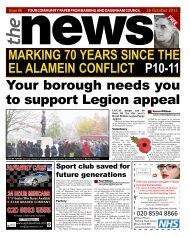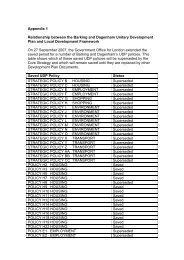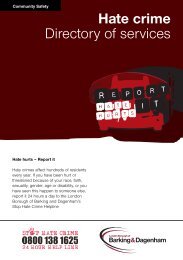Contents - Barking & Dagenham
Contents - Barking & Dagenham
Contents - Barking & Dagenham
You also want an ePaper? Increase the reach of your titles
YUMPU automatically turns print PDFs into web optimized ePapers that Google loves.
<strong>Barking</strong> Station Interchange<br />
Again the plot shows us the concentration of people in the areas immediately surrounding the<br />
station. It also highlights that most people use public transport to get to the station, with those<br />
walking (as would be expected) being the closet. Bus (red) and walking (pink) clearly dominate,<br />
with underground (blue) being significant further away. Most of those who travelled by car (yellow)<br />
appear to come from northeast of the station. The national rail journeys are more widespread,<br />
confirming the wider area served.<br />
The majority of those accessing <strong>Barking</strong> Station to use Platform 1 do so via rail – both National<br />
Rail and the underground. It is interesting to note the decline in those that walk to <strong>Barking</strong> Station<br />
to use Platform 2 after 10:00. The main mode of transport for those using this platform is the<br />
underground. There is no car use for access at all which could be expected as they serve areas<br />
of low car ownership.<br />
There is no dominant mode by which people travel to use <strong>Barking</strong> Station and use Platform 3,<br />
likewise on Platform 7 the mode of access is fairly evenly distributed between those that walk, and<br />
those that travel by bus or National Rail, and on Platform 6 access is predominantly by bus or on<br />
foot.<br />
The predominant mode of travel to <strong>Barking</strong> Station for those using Platform 4 is the underground<br />
followed by bus.<br />
There is a higher proportion of those that walk to the station using Platform 5 than any other<br />
mode; however, the highest proportion of those that walk to the station is amongst those that use<br />
Platform 8.<br />
Bus Use<br />
10 bus routes pass <strong>Barking</strong> station (5, 62, 169, 179, 238, 287, 366, 368, 369, 387). Figure 2.4<br />
shows a map of these and Table 2.2 below summarises the information. 9<br />
9 Both the map and summary table are copyright of TfL and sourced from their website – www.tfl.gov.uk<br />
5062859/_04 <strong>Barking</strong> Interchange Stage 1 Report TP.doc<br />
47


